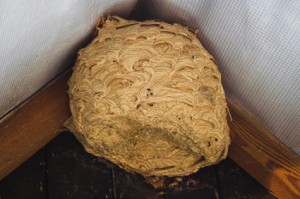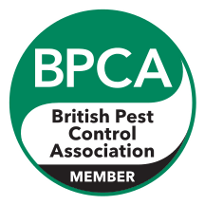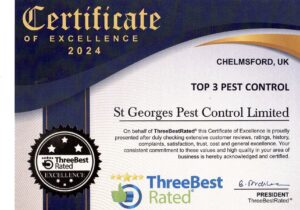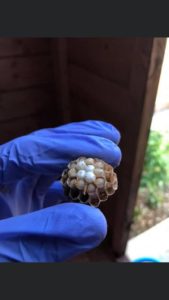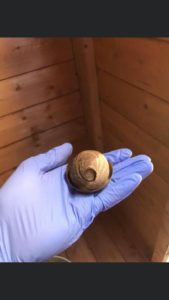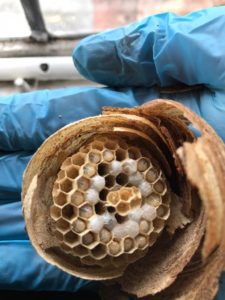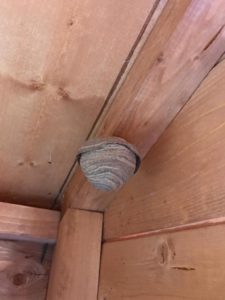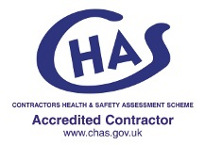Insecticide Spray Treatment
The first thing we do when arriving at your property is to have a good look around the outside of the building to see if there is just one nest. It is not uncommon for a property to have several wasp nests.
If we can see wasps entering under the roof tiles, eaves or high up into the roof areas we would usually carry out a full inspection from inside the loft as this is where the nest will probably be sited.
If the wasp nest is in the loft space and is accessible we treat is using a sprayer containing an oil-based insecticide (permethrin).
A wasp nest is protected by guard wasps and in order for us to apply the insecticide without getting stung we wear protective clothing and always take a torch. The torch is placed to one side of the nest with the light beam pointing away, the wasps that are protecting the nest fly towards the torch light instead of flying towards us!
We usually wait for 5-10 minutes until the whole nest is dead before collecting it into a large bucket or a black bag along with the dead wasps.
Any wasps that are away from the nest at the time of the treatment will return to the site and be killed off by the residual insecticide before it dries and evaporates.
After applying a light spray of insecticide to the outside of the nest, the sprayer lance then punctures the inner nest and the platelets of cells are sprayed, very slowly the side of the nest is broken away and all internal areas of the nest are lightly sprayed with the insecticide.
Insecticide Dust Application
If a wasp nest is inaccessible from inside the property, we would use ladders or poles from the outside. Wasps’ nests located near guttering or high up on the roof areas would be treated with an insecticide dust formulation (bendiocarb).
The insecticide dust is applied neatly into the wasp nest entrance using a pump applicator which is pumped up to a high pressure to ensure the insecticide is quickly applied before the wasps become aggressive and try to protect the nest.
Once the nest has been dusted, any returning wasps walk through the dust into the nest which becomes contaminated and will die off within a few hours.
When the wasp nest treatment is complete, we would recommend that you stay away from the nest entrance area for about one hour as the returning wasps will fly around looking for another entrance close the nest and will possibly sting or attack anyone close by.
If the nest is in a flat roof, air brick, extractor vent or wall cavity, then it would also be treated with the insecticide dusting method.

